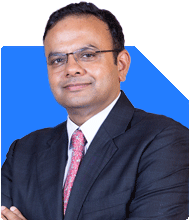Dev Ashish | Answer |Ask -Follow
MF Expert, Financial Planner - Answered on Aug 24, 2023
He provides professional fee-only investment advisory services to small and high networth individuals in order to help them achieve their financial goals.
Ashish's views are regularly published in national business publications. He has an MBA degree from NMIMS, Mumbai and also holds an engineering degree.... more

Best mutual fund to invest for new investor am aggressive investor
Note (Disclaimer) - As a SEBI RIA, I cannot comment on specific schemes/funds that are provided or asked for in the questions in the platform. And the views expressed above should not be considered professional investment advice or advertisement or otherwise. No specific product/service recommendations have been made and the answers here are for general educational purposes only. The readers are requested to take into consideration all the risk factors including their financial condition, suitability to risk-return profile and the like and take professional investment advice before investing.
You may like to see similar questions and answers below
Kirtan A Shah | Answer |Ask -Follow
MF Expert, Financial Planner - Answered on Jul 11, 2023
Abhishek Dev | Answer |Ask -Follow
Financial Planner - Answered on Aug 04, 2023
Ramalingam Kalirajan |10893 Answers |Ask -Follow
Mutual Funds, Financial Planning Expert - Answered on Jul 29, 2024
Ramalingam Kalirajan |10893 Answers |Ask -Follow
Mutual Funds, Financial Planning Expert - Answered on Jan 20, 2025
Ramalingam Kalirajan |10893 Answers |Ask -Follow
Mutual Funds, Financial Planning Expert - Answered on Dec 15, 2025
Ramalingam Kalirajan |10893 Answers |Ask -Follow
Mutual Funds, Financial Planning Expert - Answered on Dec 15, 2025
Ramalingam Kalirajan |10893 Answers |Ask -Follow
Mutual Funds, Financial Planning Expert - Answered on Dec 15, 2025
Radheshyam Zanwar |6746 Answers |Ask -Follow
MHT-CET, IIT-JEE, NEET-UG Expert - Answered on Dec 15, 2025
Ramalingam Kalirajan |10893 Answers |Ask -Follow
Mutual Funds, Financial Planning Expert - Answered on Dec 15, 2025
Ramalingam Kalirajan |10893 Answers |Ask -Follow
Mutual Funds, Financial Planning Expert - Answered on Dec 15, 2025
Ramalingam Kalirajan |10893 Answers |Ask -Follow
Mutual Funds, Financial Planning Expert - Answered on Dec 15, 2025
Samraat Jadhav |2508 Answers |Ask -Follow
Stock Market Expert - Answered on Dec 15, 2025
Ramalingam Kalirajan |10893 Answers |Ask -Follow
Mutual Funds, Financial Planning Expert - Answered on Dec 15, 2025
Reetika Sharma |425 Answers |Ask -Follow
Financial Planner, MF and Insurance Expert - Answered on Dec 15, 2025
Radheshyam Zanwar |6746 Answers |Ask -Follow
MHT-CET, IIT-JEE, NEET-UG Expert - Answered on Dec 15, 2025

























